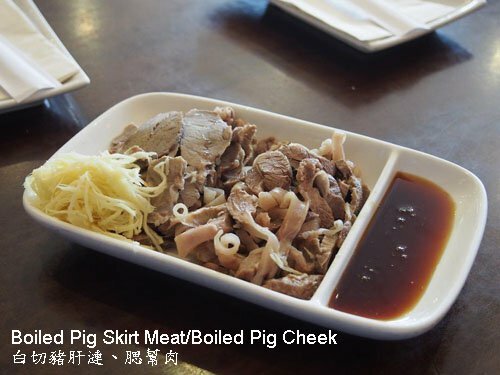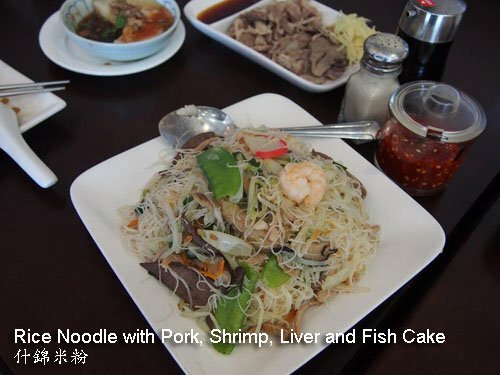Relations between Taipei and Manila have been especially tense since the recent killing of a Taiwanese fisherman, Hong Shi-cheng, by a Philippine Coast Guard vessel on May 9. This incident has strongly stirred Taiwanese anger. So much so, that Director General Bruce Fuh of the Taipei Economic and Cultural Office in San Francisco penned a letter to politicians and opinion leaders saying, “I hope you can see the merit of keeping abreast of this escalating situation. Please join us in seeking justice for Mr. Hong, and to prevent such a cruel murder from taking place again by putting pressure on the Philippine government. Your attention to this incident and support for a fair, transparent investigation is greatly appreciated.”
In his May 21 letter, Fuh explained the situation that has been brewing between Taiwan and the Philippines as one that could influence the stability of the region. His letter was a part of the global protests launched by Taiwan’s Foreign Ministry after the incident.
Coldblooded murder, callous attitude
On May 9, a Taiwanese fishing boat Guang Da Xing No. 28 was fired upon by a Philippine government vessel in the overlapping Exclusive Economic Zone (EEZ) between Taiwan and the Philippines. The coldblooded attack left Hong Shi-cheng, the 65-year old Taiwanese captain, dead and the fishing boat adrift. The use of excessive force was apparent by the 48 bullet holes that riddled the defenseless fishing boat.
The attack was so shocking that the Taiwan government immediately asked for a formal apology, compensation, an expedited investigation with the appropriate sentencing of the perpetrators, and a forum to negotiate fisheries matters to prevent a repeat of such an incident.
Although the Philippine government made an apology, it has done little to soothe the anger felt by Taiwan’s people, particularly when Manila characterized the shootings by its coast guard as “unintended”, and postponed a joint investigation by turning away Taiwan’s investigative team on May 18. Furthermore, the Philippine government claimed that the GDX 28 rammed its official ship and the latter acted in self-defense. Both claims are outlandish, given that the fishing boat is seven times smaller.
Unnecessary use of force on an unarmed fishing boat truly violates international law, especially the UN Convention on the Law of the Sea. Piracy in the Philippines, sometimes under the guise of the coast guard, is rampant in the waters south of Taiwan. In the past, many perpetrators were not punished by the Philippine government. Seeking justice for the murdered fisherman, the Taiwanese government has instituted contingent measures, ranging from ceasing to process the applications of Filipino laborers, imposing sanctions on bilateral economic exchanges, to stepping up its Navy patrols in these EEZ waters.
Neighbors, yet strangers
The shortest distance between Taiwan and the Philippines is only 141 kilometers (87 miles). There are now about 88,000 Filipino laborers in Taiwan, half of them work as caregivers for the elderly or disabled, while the other half are mainly construction workers. However, the squabbling resulting from the GDX 28 incident shows that Taiwan is ignorant of its next door neighbor, reported Commonwealth monthly.
After the incident, Taiwan sent an ultimatum to the Philippines to apologize within 72 hours coinciding with their parliamentary and local election campaigns. Manila ignored it on the grounds that it was “off duty on weekend.” Although close in proximity, the distance culturally is clearly apparent.
Commonwealth reported that Filipinos are the second happiest people in Asia, only after Thais, according to the latest poll by Gallup. Whenever disaster strikes the Philippines, victims are often seen smiling and happy in pictures taken at inflicted areas. However, what has riled the Taiwanese is learning that the Philippine coast guards laughed while firing upon the GDX 28, and worse, when the Philippine government spokeswoman addressed the incident at a press conference, she did it with a smile. Although Filipinos have a reputation for being happy people, their lack of remorse in this case has not endeared the country to Taiwanese people, but rather, added fuel to the fire.
Sea of troubles between Taiwan and the Philippines
Taiwan’s territory is smaller than three-fourth of the UN’s member states, but the island has maritime clout in the world, the Taipei-based Business Weekly reported.
According to UN statistics, Taiwan’s tuna fish catch is the fourth largest globally, only behind Japan, Indonesia and Spain. The big purse seine fishing boats Taiwanese own rank No. 4 in the world in terms of the number of vessels. Taiwan’s small and medium sized fleets of tuna longline fishing vessels rank No. 2 only behind Japan. Taiwan’s annual production value of offshore fishing reached NT$40 billion (US$1.33 billion) last year. This figure did not include those from actual Taiwanese fleets but those registered under foreign countries. If all were included, the total Taiwanese fishing value would reach NT$100 billion (US$3.33 billion).
Sixty percent of the global tuna fish comes from the mid-Western Pacific Ocean near Taiwan, but the largest tasty black tuna favored by many connoisseurs mainly come from the overlapping EEZ between Taiwan and the Philippines.
Taiwanese fishermen from Donggang and Lamay Island, both in Pingtung County in southern Taiwan, catch tuna for a living; while the Philippines depend on these Taiwanese fishermen entering this overlapping area for money. Captain Lin Han-de of Lamay Island told the weekly that they have been catching black tuna fish for three generations – from his grandfather to his father, now to himself. They have apparently come under numerous attacks from the Filipino Navy, coast guards and militia. A member of the Donggang Fishing Association said, “The Taiwanese fishing boats are expensive, and equipped with advanced devices. Besides, Filipinos believe Taiwanese are rich anyway.”
Given these circumstances, Taiwanese fishermen always carry up to US$10,000 onboard to pay ransoms in case they are arrested by the Philippine Coast Guard. When confronting greedier Filipinos, their boats would be towed in the direction of the Philippines, and their US dollars confiscated. At times, the sailors have been asked to pay more – sometimes from US$60,000 or even up to US$300,000. In all cases, the fishermen were released, but only after their families had wired the ransom money, Business Weekly reported.
However, before the GDX 28 incident, there were over 600 Taiwanese boats going there to fish with only a catch of 50 tunas. Up to 90 percent of the Taiwanese fishing boats returned empty-handed. So far this year, the catch of black tuna by the fishermen from Donggang are at record lows, only 119 tunas, a contrast with the historic record highs of 300-500 tunas a day.
Professor C.C. Hsu, from the Oceanography Institute, National Taiwan University, told Business Weekly that the GDX 28 incident is only the tip of the iceberg between Taiwan and the Philippines. As the ocean resources get scarcer and scarcer, the struggle to grab those precious resources will get fiercer, not less so.
Following a similar model with Japan
Lacking membership in the United Nations, Taiwan is not able to be a signatory on many international fishing agreements. Taiwan usually concludes separate memorandums of understanding that obligate the island under regional or global fish-quota systems.
The relations between Taiwan and the Philippines have never been tense before. Both sides signed a memorandum on fisheries cooperation in 1991, designating two routes for Taiwanese fishing boats to pass and in turn Taipei offered financial aid to Manila for fisheries cooperation. It was not until 1998 that the Philippines passed their own fisheries law and unilaterally abandoned this memorandum. Thus this part of the ocean became a point of conflict, Business Weekly reported.
After the GDX 28 incident, the Taiwan government asked the Philippines to restart the fishing negotiation, following the model of the fisheries agreement between Taiwan and Japan, regulating the fishing operations of both countries in these overlapping territorial waters.
Taiwan and Japan finally signed a fisheries agreement this April after 17 negotiation talks since 1996. At a time of conflict over the sovereignty issue of the Diaoyutai Islands between Taiwan and Japan, the two sides still reached an agreement on fishing operations in the overlapping EEZ, without touching upon the sovereignty issue. The agreement has been effective since May 10.
According to the Central News Agency, on June 14, Taiwan and the Philippines reached an initial consensus during a preparatory meeting in Manila over fisheries issues. Both sides agreed to address the mechanism: to not use force during enforcement, to notify each other in the event of fishing boat incidents and to immediately release fishermen and boats detained.
President Ma Ying-jeou stressed if the dispute between Taipei and Manila are not solve soon, it will affect the bilateral relations and the peace and security of the region as well, reported the United Daily News.
Winning greater regional influence
According to the British newspaper, the Guardian, Taiwan’s fishing deal with Japan “may have finally been clinched by China’s recent naval assertiveness, about which both Japan and Taiwan are wary… Taiwan is winning for itself greater regional influence.”
The Central News Agency reported that Taiwan is seeking to revise the principles of protecting its fishing boats in the overlapping EEZ by considering expanding patrols to the area surrounding the whole Batan Island off the Philippines, and letting its Navy and coast guards regularly patrol further south to protect fishing boats.
Near to the Batanes Archipeligo lie important navigational channels for commercial vessels passing through the Bashi Channel. The expansion of Taiwanese Navy patrols in the EEZ will show the island’s determination to stand toe to toe, so that neighboring countries need to pay more heed to the situation.
The Navy’s expanded area of patrol will go a long way to protecting Taiwan’s fishing rights and sovereignty. Through the routine protection of its fishing boats, Taipei will force the Philippines to face the reality of Taiwan’s regional power and seriously sit down with Taiwan in negotiations, stressed the Central News Agency.









